Affiliate links on Android Authority may earn us a commission. Learn more.
ASUS ROG Phone 2 hands-on: Overkill
July 24, 2019
The ASUS ROG Phone 2 is an update to the gamer-centric ROG Phone from 2018. It looks eerily similar, with the same edgy metallic design and glowing Republic of Gamers logo on the back.
At first glance you might not realize the phone has changed at all, and yet there are actually a ton of updates in this year’s ROG Phone. You just have to know where to look for them.
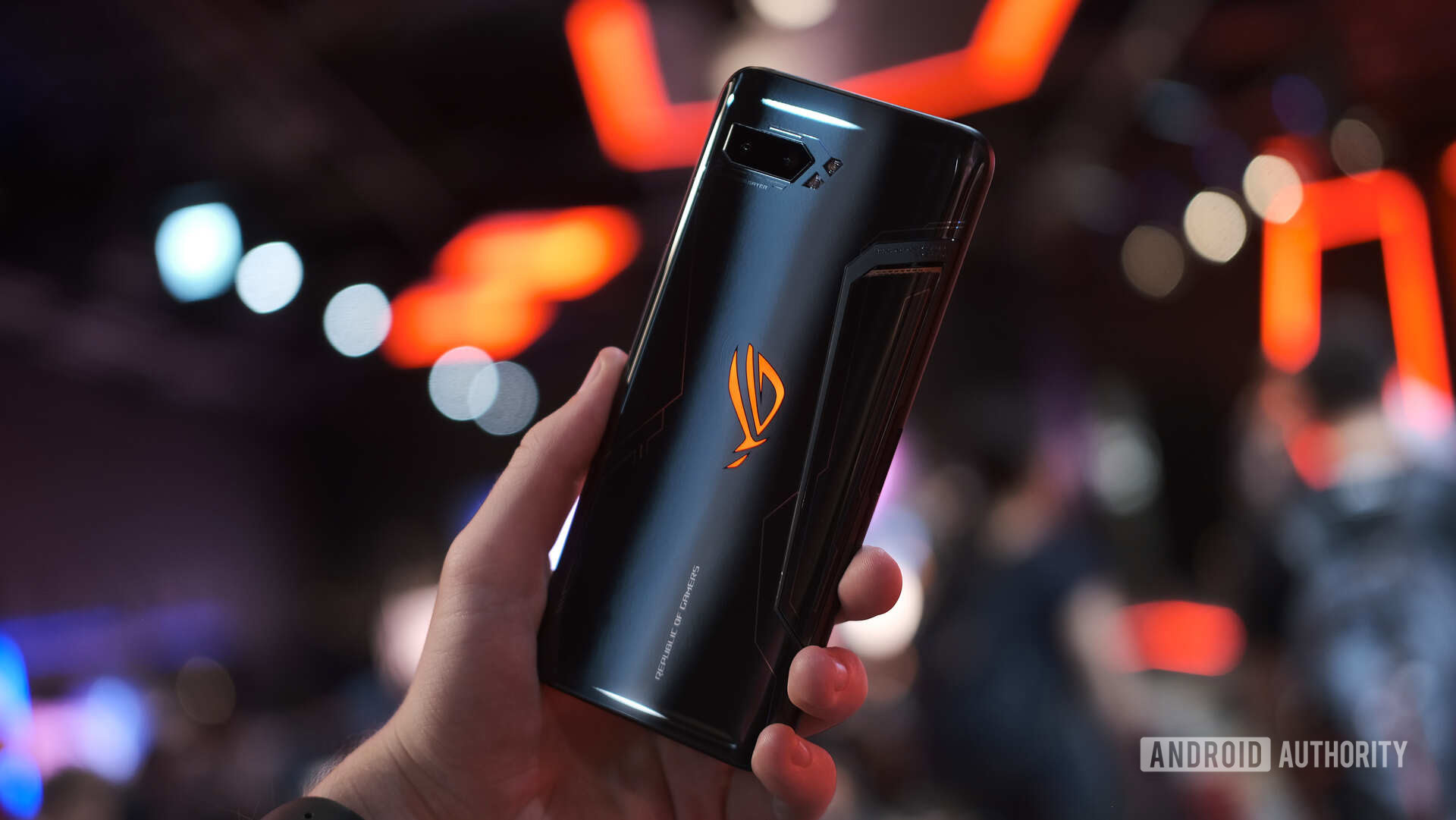
A familiar face, but quite different
The most obvious difference between the original ROG Phone and the ROG Phone 2 is the physical size. The sequel scales up to a 6.59-inch display with a 19.5:9 aspect ratio. While those dimensions seem pretty massive, the phone itself feels even bigger in the hand than it should. This is likely due to the bezels around the display, which are very noticeable compared to something like the OnePlus 7 Pro. ASUS said it sized the bezels intentionally to fit the front-facing camera for streaming and a pair of stereo front-facing speakers.
The ROG Phone 2 uses the newest Gorilla Glass 6, so it should be quite shatter-resistant if you drop it. This is nice, because although the phone looks quite aggressive, the glass back makes it feel a bit fragile. You probably won’t need to worry about smashing this thing.
Here’s where the phone starts to get really interesting. The ROG Phone 2 has the first 120Hz AMOLED panel in any Android phone. You can really see the difference compared to normal 60Hz displays. Animations are smooth and buttery, and though I didn’t get to spend that much time with it, brightness felt perfectly adequate.
120Hz on an AMOLED? Sign me up.
ASUS claims the display has 1ms of response time after registering an input. This is a metric we usually see advertised on computer monitors, and it’s pretty clear why ASUS has optimized response time on its phone.
ROG Phone owners play mobile games an average of 42 minutes per day, versus 16 minutes across all other Android devices. ROG Phone users also tend to play fast-paced action and racing titles, versus easy-going puzzle-style games. Action and racing games require fast refresh rates (assuming the games support them) and lightning-quick response times. In order to meet its users’ needs, ASUS equipped the ROG Phone 2 with a 240Hz touch sampling rate. This means the display will scan for input 240 times per second, thereby lowering response times. During my time with the device, I couldn’t tell a huge difference between a standard touch sampling rate and the ROG Phone 2’s quick rate, but perhaps more seasoned players may be able to.
This display covers 108 percent of the DCI-P3 color gamut, according to ASUS, and has a 10,000:1 contrast ratio thanks to the AMOLED panel. It also sports 10-bit HDR capabilities.
The ROG Phone 2’s battery should last a very long time on a charge — assuming the 120Hz display doesn’t slurp power. The phone packs an absolutely massive 6,000mAh battery, one of the largest we’ve seen in an Android phone. That said, the ASUS Zenfone 6 included a 5,000mAh cell and our testing yielded only average battery life. Hopefully, we’ll get a bit more juice out of this higher-capacity battery.
If you get to the point where you’re low on power, the phone supports 30-watt quick charging. ASUS made a point to say 30-watt charging will work with any standard USB-A cable. This is in comparison to the OnePlus 7 Pro’s Warp Charge, which requires a OnePlus cable to function properly. The ROG Phone 2 will take longer to charge versus other 30-watt capable devices such as the OnePlus 7 Pro, but that is purely because the capacity is so high.
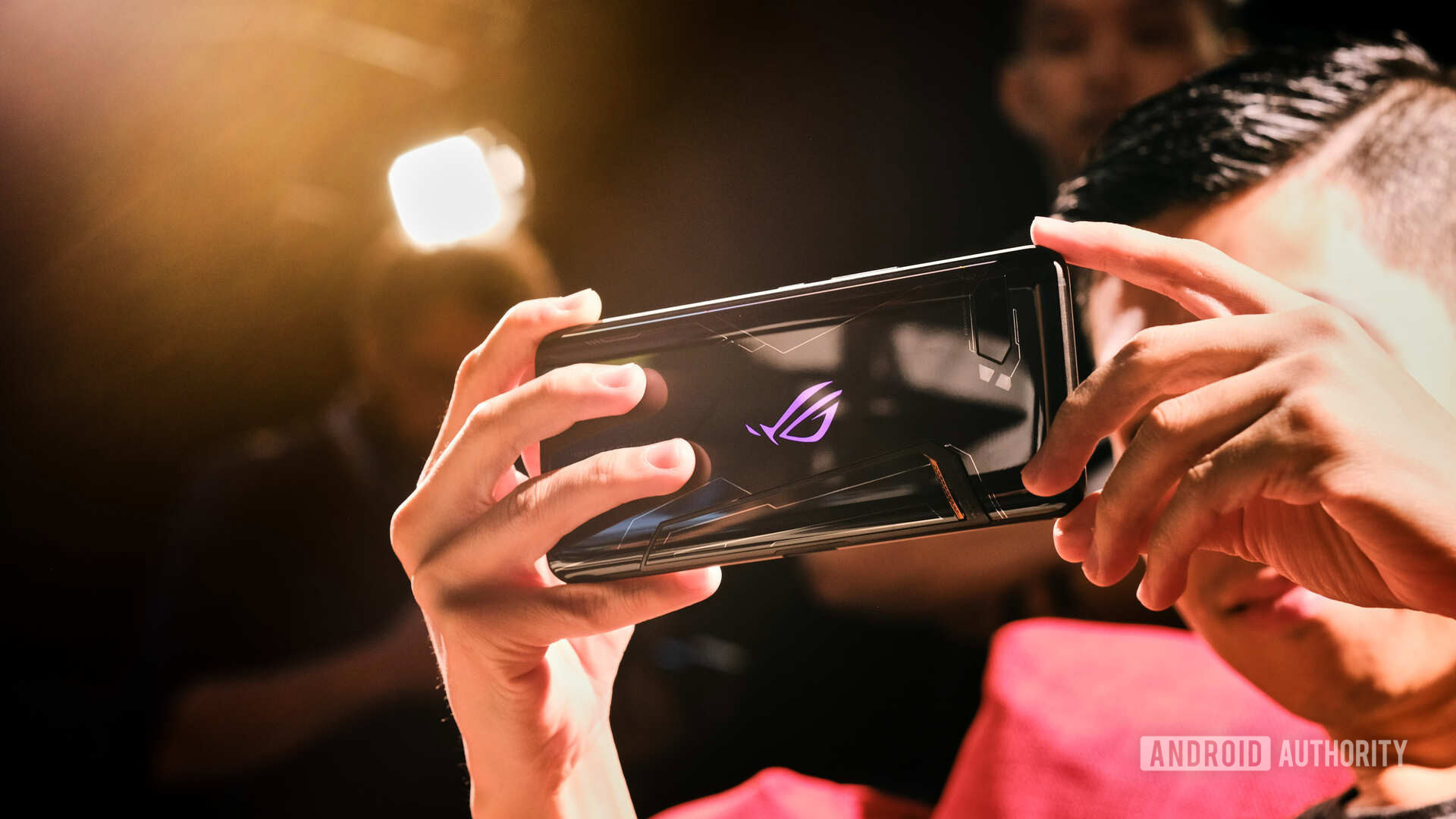
This wouldn’t be a gaming phone without some beefy specs providing the grunt. The ROG Phone 2 is the first device to run the Qualcomm Snapdragon 855 Plus SoC, which has a four percent faster CPU and 15 percent faster GPU than the standard Snapdragon 855. The 855 Plus is an overclocked SoC, so you can expect it to get hotter than the standard 855. As it did with the first-generation ROG Phone, ASUS went out of its way to put some serious cooling capabilities in this device.
These are the best specs on Android right now.
There is a 3D vapor chamber in the phone, as well as vents inside and on the back, and the external active cooler that attaches to the outside of the phone. ASUS says it can maintain 98 percent frames-per-second stability with zero throttling. The company didn’t mention how long the phone can sustain this rate, however, so we’ll have to conduct our own tests to fully asses ASUS’ claims.
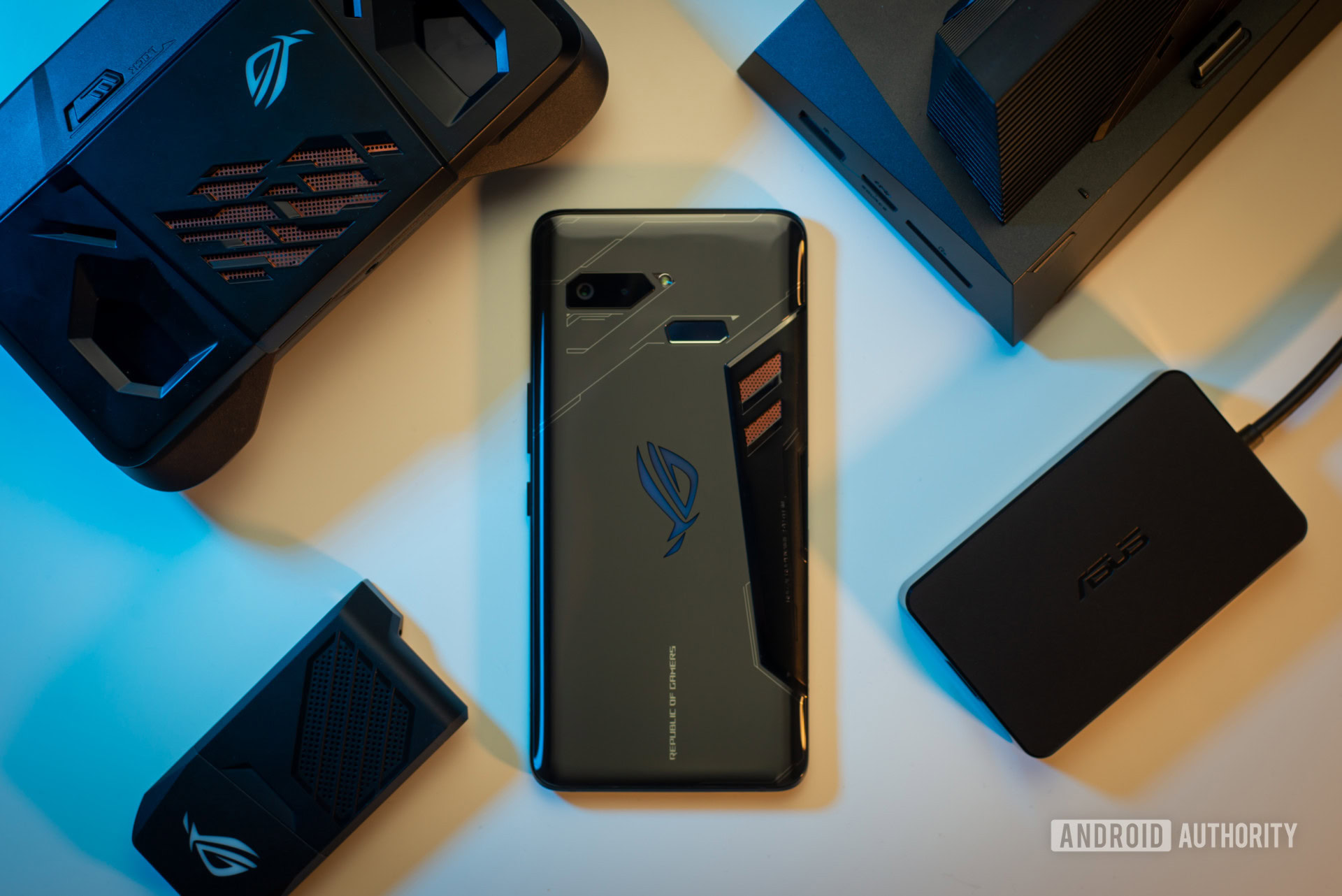
Other specs include 12GB of LPDDR4 RAM and up to 512GB of UFS 3.0 storage, making the ROG Phone 2 the second device available with this faster storage type. You’ll also get four 802.11ad Wi-Fi antennas, an optical in-display fingerprint reader, and a new generation of touch-triggers on the side of the device for games. For audio, you’ve got a headphone jack and the front-facing stereo speakers. This thing is stacked.
On the back, you get the same glowing logo we saw on the first ROG phone, and you can configure it to cycle colors, pulse on and off, or remain static. It’s flashy and frankly unnecessary, but it’s a fun addition to an already aggressive-looking device.
As for cameras, ASUS copied the rear-facing camera setup from the Zenfone 6. That includes the 48MP IMX586 Sony sensor and a 13MP wide-angle camera with a 125-degree field of view. The front of the device features a 24MP selfie camera in the top right, which ASUS says is the optimal positioning for streaming.
On the left side, you’ll find two extra USB-C ports, which are primarily used for optional accessories but are great for long gaming sessions as well. Mobile gamers have told me that bottom-mounted USB-C ports make it hard to game in landscape mode, and in a recent interview, pro mobile gamer PowerBang Gaming told me the side-mounted USB-C ports were his favorite feature from the original ROG phone.
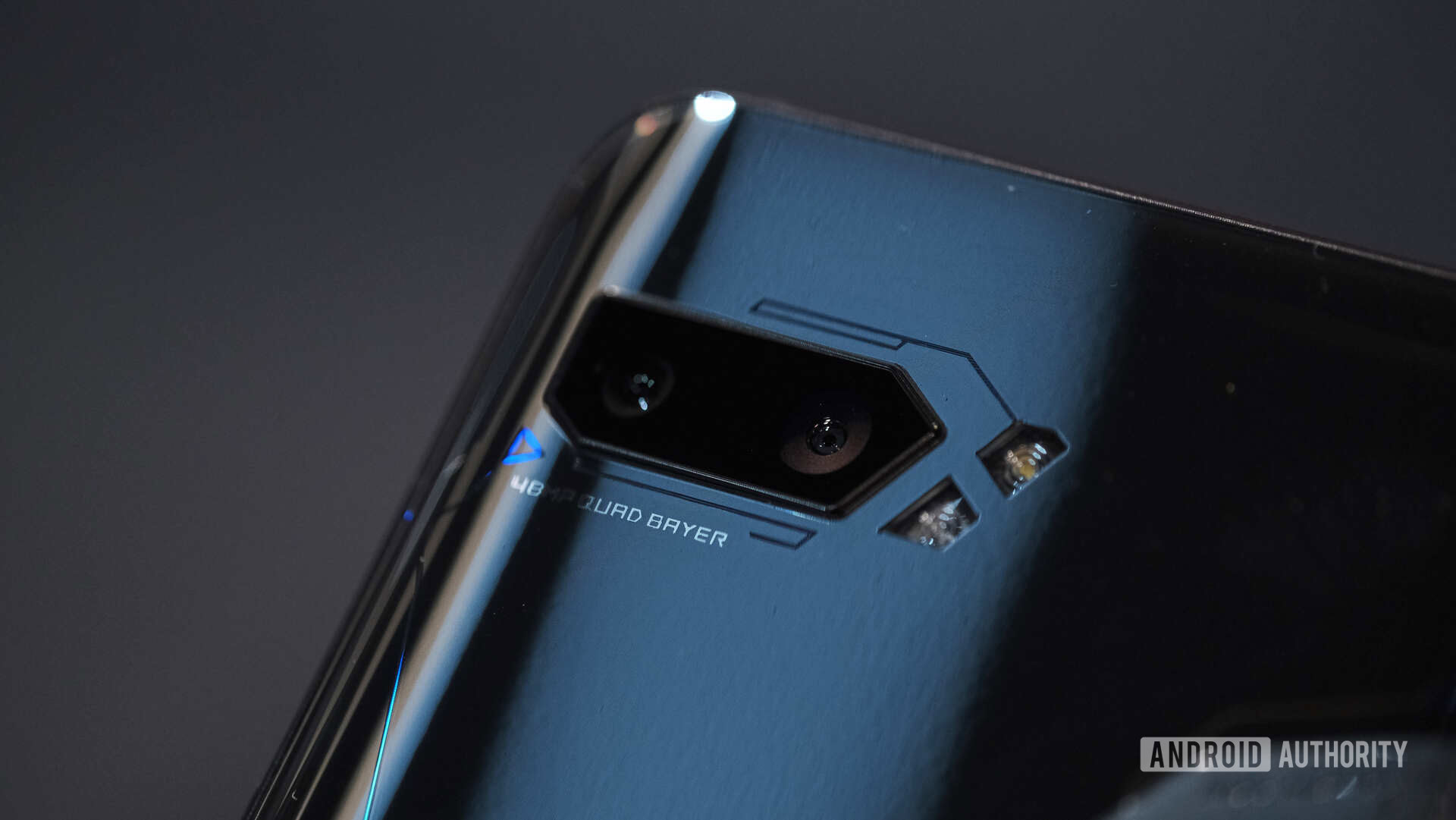
One of the most exciting changes in the ROG Phone 2 is the option to use ZenUI 6, the new software experience that debuted in the ASUS Zenfone 6. This is a simpler Android skin than we’ve previously seen in ASUS devices. In our Zenfone 6 review, we noted how refreshing it was to use the stock-like software from ASUS.
You still have the option to use the edgier ROG launcher, but I think ZenUI 6 with this kind of power is the perfect combination, at least for me.
Accessory overload
One of the best parts about buying the original ROG Phone was the varied array of accessories. ASUS went all out again this year. There are eight accessories you can mount to the device, and many of them are modular so they can work together.
- AeroActive Cooler II: An active cooling fan that mounts into the two USB-C ports. This ships with the device in the box.
- Aero Case: Thin and light case that shows the glowing ROG logo on the back.
- TwinView Dock II: A clamshell device with a display on top and a 5,000mAh battery to power it.
- ROG Kunai Gamepad: A set of controllers that effectively turns the ROG Phone 2 into a Nintendo Switch.
- Mobile Desktop Dock: A dock to mount your phone and connect it to a separate monitor.
- Pro Dock: A dongle that adds tons of I/O, like USB-A ports and ethernet.
- WiGig Display Dock Plus: Allows you to stream your device to a TV or other monitor for big-screen gaming.
- ROG Lighting Armor Case: A special case that lights up on the back and uses NFC to change your wallpaper.
I tested the AeroActive Cooler II, the Kunai Gamepad, and the WiGig Display Dock Plus. The cooler worked well to keep the device from heating up during a session of PUBG Mobile. I thought the WiGig Display Dock worked great for playing games on the TV.
Conversely, I was pretty disappointed with the Kunai Gamepad. I was initially excited because it turns the phone into a Nintendo Switch with Joy-Con-like controllers that slot into the side. The buttons were very rigid, though, and the controller felt relatively low quality. It’s possible this is not a final retail unit, so I’ll give it another look once ASUS sends out review samples.
Staggered launch
The ASUS ROG Phone 2 will launch July 23 in Beijing, with a global rollout starting September 4. We still don’t have international pricing for the device, but its price in China has been confirmed at 5,999 yuan (~$873) and the original ROG Phone started at $899; we can assume the ROG Phone 2 will cost around that in the U.S..
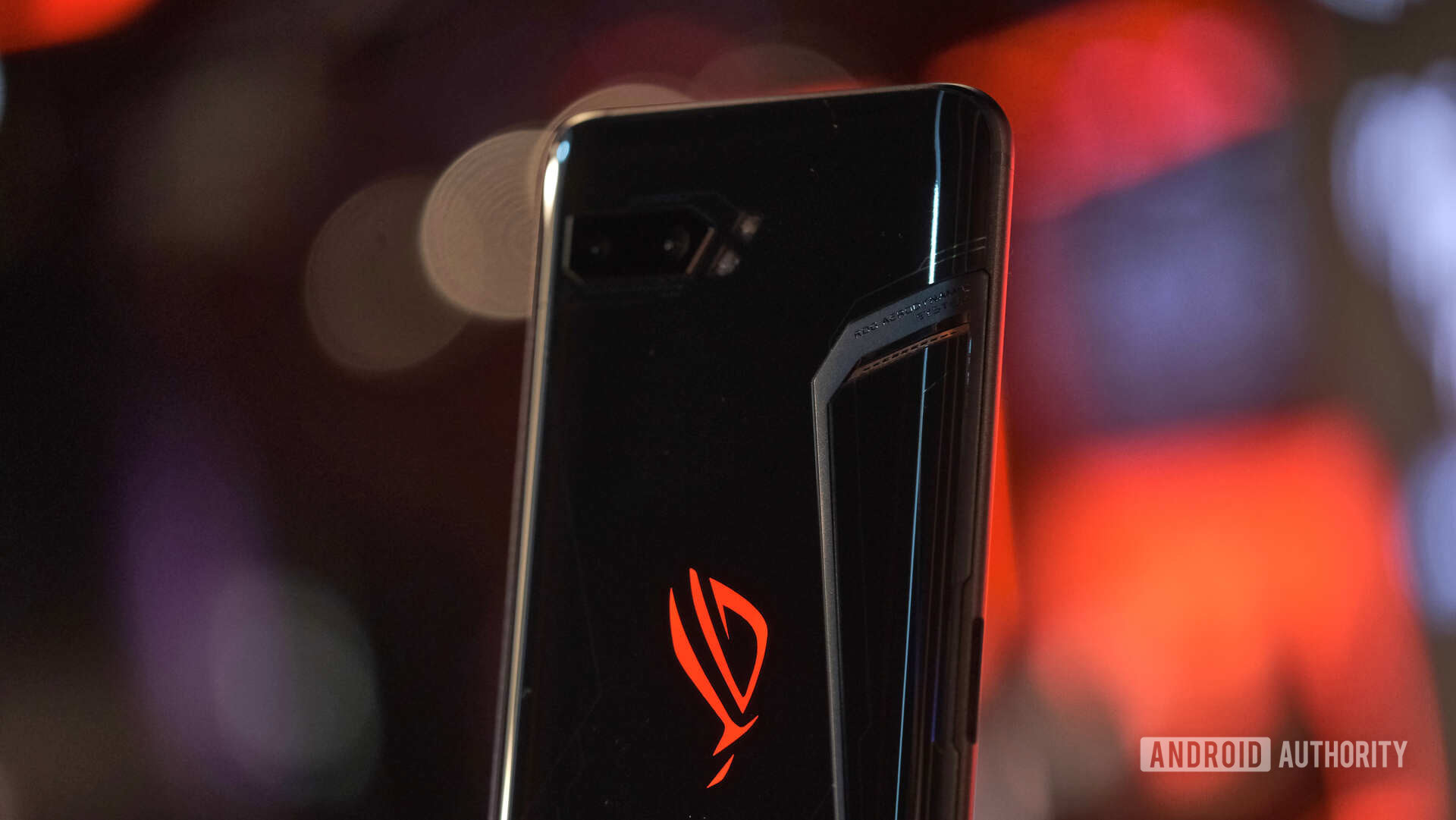
With specs like these, it’s not hard to see why the ROG Phone 2 is worth a look. We’re excited to get a unit soon and test all of ASUS’ claims.
Are you looking forward to this device? Is it complete overkill? Let us know your thoughts below!